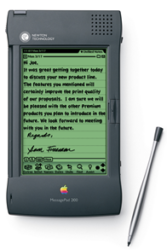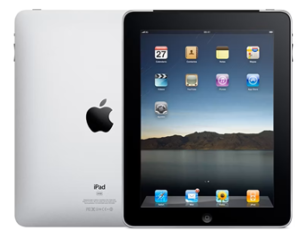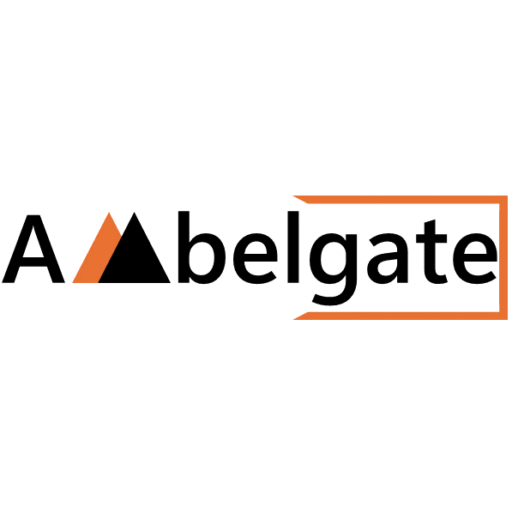Tablets
Electronic tablets have become essential devices in today’s digital landscape, blending the portability of smartphones with the functionality of laptops. They are versatile tools used for everything from reading and gaming to professional work and creative endeavors. This blog explores the evolution of tablets, their key features, types, and uses.
The Evolution of Tablets
The concept of a tablet-like device has been around for decades, but it wasn’t until the 21st century that tablets became mainstream. Here’s a brief overview of their evolution:

Early Concepts (1980s–1990s): Devices like the Apple Newton and the Microsoft Tablet PC were among the first to explore the tablet form factor. However, they were limited by technology and never achieved widespread success.
The iPad Revolution (2010):

The modern tablet era truly began with the launch of the Apple iPad in 2010. The iPad’s user-friendly interface, combined with its large touchscreen and access to a vast app ecosystem, made it an instant hit. It redefined how people consumed media, played games, and even worked on the go.
Android Tablets and Competitors: Following the success of the iPad, various manufacturers like Samsung, Google, and Amazon introduced their own tablets running on Android. These devices offered more customization and variety in price points, catering to a broader audience.

Hybrid and 2-in-1 Tablets: As tablets evolved, so did their functionality. The introduction of 2-in-1 devices like the Microsoft Surface Pro brought tablets with detachable keyboards and powerful processors capable of running full desktop operating systems like Windows 10. These devices blurred the line between tablets and laptops.

Recent Trends: Modern tablets now come with features like high-resolution displays, stylus support, and powerful processors, making them suitable for creative professionals, gamers, and business users alike. Tablets like the iPad Pro and Samsung Galaxy Tab S series have set new standards in performance and functionality.
Key Features of Modern Tablets
Today’s tablets are equipped with a wide range of features, making them versatile tools for various use cases. Here are some of the most important features:
Display Quality: The display is a critical aspect of any tablet. Modern tablets come with high-resolution screens, often featuring OLED (Organic Light-Emitting Diode) or AMOLED (Active Matrix Organic Light Emitting Diode) technology, which provides vibrant colors and deep blacks. Screen sizes typically range from 7 inches to over 12 inches, catering to different preferences and use cases.
Processing Power: Tablets are powered by mobile processors, which vary in power depending on the device. High-end tablets, like the iPad Pro, use processors comparable to those found in laptops, allowing for multitasking, gaming, and even video editing. Mid-range tablets offer sufficient power for everyday tasks like browsing, streaming, and light gaming.
Operating Systems: Tablets run on various operating systems, each offering a unique experience.
iPadOS: Exclusive to Apple’s iPads, iPadOS is known for its smooth user interface, robust app ecosystem, and seamless integration with other Apple devices. It supports multitasking, file management, and features like the Apple Pencil, making it ideal for creative professionals and students.
Android: Android tablets offer a more customizable experience, with a wide range of devices available at different price points. Android supports multitasking, widgets, and a vast array of apps, making it versatile for both personal and professional use.
Windows: Windows tablets, like the Microsoft Surface series, run a full desktop operating system, allowing users to run traditional software like Microsoft Office, Adobe Creative Suite, and more. These tablets are ideal for business users and professionals who need a portable device that can handle demanding tasks.
Fire OS: Used in Amazon’s Fire tablets, Fire OS is a simplified version of Android, focused on media consumption and integration with Amazon services like Kindle, Prime Video, and Alexa.
Battery Life: Battery life is crucial for a portable device like a tablet. Most modern tablets offer 8 to 12 hours of battery life, depending on usage. Tablets with larger batteries or energy-efficient components can last even longer, making them ideal for travel or all-day use.
Storage Options: Tablets come with various storage capacities, typically ranging from 32GB to 1TB. Some tablets offer expandable storage via microSD cards, while others rely solely on internal storage. Higher storage capacities are essential for users who download large apps, store media, or work with large files.
Camera Capabilities: While tablets are not typically used as primary photography devices, they often come with decent cameras for video calls, document scanning, and casual photography. High-end tablets may include advanced camera features like 4K video recording and wide-angle lenses.
Stylus and Accessory Support: Many tablets now support styluses, which are pen-shaped tools used to interact with touch screens, like the Apple Pencil or Samsung S Pen, which are invaluable for artists, designers, and note-takers. Other accessories, like detachable keyboards, cases, and docks, enhance the tablet’s functionality and make it more versatile.

Connectivity: Modern tablets support a range of connectivity options, including Wi-Fi, Bluetooth, and cellular data (LTE/5G) for internet access on the go. USB-C ports are becoming standard, allowing for faster data transfer, charging, and connection to external devices.
Types of Tablets
Tablets come in various types, each catering to different needs and user preferences:
Standard Tablets: These are the most common type of tablet, suitable for a wide range of tasks like browsing, streaming, gaming, and light productivity. The iPad, Samsung Galaxy Tab, and Amazon Fire tablets fall into this category.
2-in-1 Tablets: Also known as hybrid tablets, these devices can function as both a tablet and a laptop, thanks to detachable keyboards and powerful processors. The Microsoft Surface Pro and Lenovo Yoga series are examples of 2-in-1 tablets that offer the flexibility of a laptop with the portability of a tablet.
Gaming Tablets: These tablets are optimized for gaming, featuring powerful processors, high-refresh-rate displays, and enhanced graphics capabilities. While gaming tablets are still a niche market, devices like the Razer Edge are suitable specifically to mobile gamers.
E-Readers: While not traditional tablets, e-readers like the Amazon Kindle are designed for reading digital books. They feature e-ink displays that are easy on the eyes and offer long battery life. Some advanced e-readers also support basic web browsing and app functionality.
Kids’ Tablets: These tablets are designed specifically for children, featuring robust parental controls, educational content, and durable designs. Examples include the Amazon Fire Kids Edition and LeapFrog tablets.
Uses of Tablets
Tablets are incredibly versatile and can be used for a wide range of purposes:
Entertainment: Tablets are popular for watching videos, playing games, and reading e-books. Their portability and large screens make them ideal for consuming media on the go.
Education: Tablets are increasingly used in education, providing interactive learning experiences for students of all ages. They can replace textbooks, offer access to educational apps, and facilitate remote learning.
Work and Productivity: Many professionals use tablets for work-related tasks, such as taking notes, managing emails, and even creating content. With the right accessories, tablets can function as lightweight laptops.
Creative Work: Artists and designers use tablets for drawing, graphic design, and video editing. The combination of a stylus and high-resolution screen provides a natural and precise tool for creative projects.
Communication: Tablets are often used for video calls, messaging, and social media. Their larger screens make them more comfortable to use for extended conversations than smartphones.
Smart Home Control: Tablets can serve as control hubs for smart home devices, allowing users to manage lighting, security cameras, and other connected devices from a single interface.
Health and Fitness: Tablets are used in healthcare for patient management, accessing medical records, and telemedicine. Fitness enthusiasts also use tablets to stream workouts, track progress, and access health apps.
Future Trends in Tablet Technology
The tablet industry continues to evolve, with several trends shaping the future:
Foldable Tablets: Foldable screens are a significant innovation in the tablet space. These devices offer larger displays that can be folded for portability, combining the benefits of both tablets and smartphones. As the technology matures, foldable tablets are expected to become more common.
Enhanced Stylus Capabilities: As tablets continue to target creative professionals, stylus technology will improve, offering more precision, pressure sensitivity, and features like haptic feedback (using vibrational patterns for signaling). This will make tablets even more viable for tasks like digital art, design, and note-taking.
5G Connectivity: With the rollout of 5G networks, tablets with built-in 5G modems will become more prevalent, offering faster internet speeds and better connectivity for streaming, gaming, and remote work.
Improved Battery and Charging Technology: Advances in battery technology and faster charging will allow tablets to last longer and charge more quickly, reducing downtime and improving portability.
Integration with Smart Ecosystems: Tablets are increasingly becoming central hubs in smart home ecosystems, with better integration with devices like smart speakers, lights, and home security systems. This trend will continue, making tablets even more versatile and essential in connected homes.
Tablets have transformed the way we interact with digital content, offering a blend of portability, power, and functionality. Whether you’re a professional looking for a device to work on the go, a student needing a tool for studies, or a casual user seeking entertainment, there’s a tablet out there for you. By understanding the key features, types, and future trends in tablet technology, you can make an informed decision and find the perfect tablet to meet your needs.
